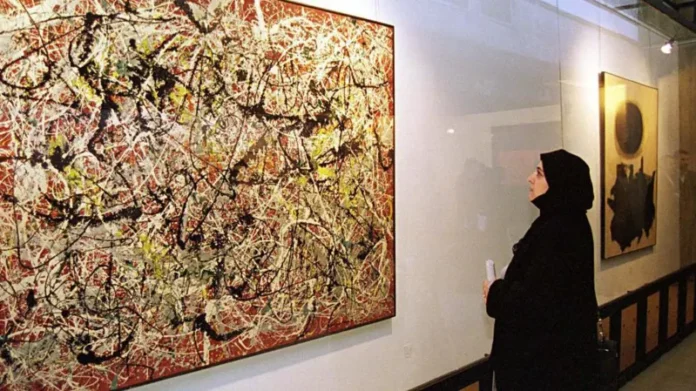The Tehran Museum of Contemporary Art (TMOCA), one of the world’s rarest repositories of modern art, has quietly housed priceless works by some of the 20th century’s greatest artists, including Pablo Picasso, Vincent Van Gogh, Andy Warhol, and Jackson Pollock.
Despite being hidden from the global public eye for decades, the museum’s collection—worth an estimated $3 billion—has slowly begun to emerge, captivating art enthusiasts and scholars alike.
The museum’s story began in 1977, when it was established under the patronage of Farah Pahlavi, the wife of the last Shah of Iran.
Designed by architect Kamran Diba, the TMOCA was built with the intention of introducing modern art to the Iranian public and connecting the country to the international art scene.
Upon its opening, the museum quickly became home to an exceptional collection of Western and Iranian modernist works.
The museum’s treasures included pieces by masters like Picasso, Warhol, Salvador Dalí, and Monet, as well as sculptures by Henry Moore and Francis Bacon.
However, the 1979 Iranian Revolution dramatically changed the course of the museum’s history.
With the fall of the monarchy and the rise of the Islamic Republic under Ayatollah Ruhollah Khomeini, many of the artworks were deemed politically or culturally inappropriate.
Artworks with nudity, political symbolism, or controversial themes were locked away, and some pieces, including Warhol’s portrait of Queen Farah, were even destroyed.
For years, these masterpieces remained hidden in the museum’s basement, fueling intrigue and speculation.
It wasn’t until the late 1990s, during the reformist presidency of Mohammad Khatami, that the museum began to reclaim its cultural significance.
Art lovers were once again given a glimpse of what had been missing: Van Gogh’s At Eternity’s Gate, Picasso’s The Painter and His Model, and Pollock’s Mural on Indian Red Ground.
The collection was also loaned to major exhibitions in Europe and the United States, briefly reconnecting it with the international art community.
The most recent chapter in this museum’s storied history came with the Eye to Eye exhibition, which opened in October 2024 and ran until January 2025 due to popular demand.
The exhibition was widely regarded as one of the museum’s most significant and visited showcases, featuring over 15 works that had never been displayed before. Among these was a sculpture by Jean Dubuffet, marking its first-ever public appearance in Iran.
Despite its restricted access due to political and travel barriers, particularly for visitors from the UK, the TMOCA remains an extraordinary cultural institution.
It continues to serve as an unlikely custodian of modern art in a country where many of these masterpieces were once considered too controversial to display.
Yet, challenges persist. The museum operates on a limited budget, and shifting political priorities often limit its ability to function as a traditional museum.
Still, the Tehran Museum of Contemporary Art stands as a testament to both Iran’s complex history and its enduring cultural contributions.
For now, art lovers in Tehran and beyond continue to be mesmerized by the museum’s rare trove of masterpieces, giving the public an opportunity to witness first-hand the power of art to transcend political divides.

